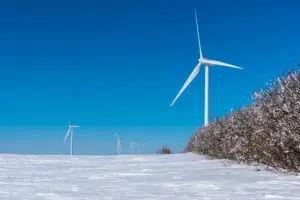By Ralph Torrie
 The race to net-zero will be a defining feature of the 21st-century global economy, but Canada’s climate change response is stuck at the starting gate. The share of our electricity supply provided by clean, renewable power is stagnating when we need it to be galloping forward, and the fossil fuel share of our energy use is stalled when we need it to be declining dramatically.
The race to net-zero will be a defining feature of the 21st-century global economy, but Canada’s climate change response is stuck at the starting gate. The share of our electricity supply provided by clean, renewable power is stagnating when we need it to be galloping forward, and the fossil fuel share of our energy use is stalled when we need it to be declining dramatically.
While opinions differ over the speed at which electrification and grid decarbonization must proceed to align with a safe climate future, there is unanimity among analysts that the pace needs to be several times greater than current levels.
The predictions climate scientists started voicing 35 years ago that climate change could wreck our economy are, unfortunately, proving right on the money. Wilfully blind eyes were turned to the observation that humanity was conducting an uncontrolled experiment on the planet’s life-support systems that could end catastrophically. Our plea for precaution in the face of clearly ecocidal risk was rejected. We have been frozen with fear and doubt when we needed to be hightailing it to a low-carbon future.
And yet, we still have time. We have not made things easier on ourselves by dawdling, but there are positive, practical pathways forward, perhaps more than ever. Through the uncertainty that clouds our vision of the future, we are beginning to see the shape of an advanced civilization that runs on renewable energy and circular flows of materials, and that works with, rather than against, the magnificent, even miraculous life-supporting systems of the planet. Like the climate crisis itself, it is a future that can and will emerge from the bottom up, that starts from the only place any big system change can begin: here and now.
The Earth Index
The Corporate Knights Earth Index is designed to reflect progress toward electrification and toward achieving and maintaining a carbon-free electricity supply. It is a 100-point index in which 50 points are allocated to electrification and 50 points to the share of carbon-free sources in the electricity supply. It is developed here for Canada but uses data sources that are widely available for all countries.
- Electrification. This is simply electricity’s share of the total end-use consumption of all types of fuel and electricity. In 2019, the most recent year for which official statistics are available, electricity accounted for 22% of total fuel and electricity consumption in Canada. At the sub-national level, electricity’s share of energy use varies from 9% in Alberta, where electricity is used almost exclusively for electricity-specific end uses (lights, appliances, electronics, etc.), to 43% in Quebec, where electricity is widely used to provide heat.
- Clean, renewable electricity supply. The indicator of interest for this part of the index is the percent of domestic electricity use that is provided by clean and renewable sources. The domestic production of clean electricity (minus net exports of clean electricity) is divided by the total production of clean electricity, minus net electricity exports. In 2019, 64% of Canada’s domestic electricity consumption was provided by clean, renewable sources. At the provincial level, the contribution of clean sources to total consumption is at or nearly at 100% in the “hydro-rich” provinces, such as Quebec, and drops as low as 8 to 22% in the provinces that are still heavily reliant on fossil generation.
The 2019 Earth Index for Canada is, therefore: 43.
Target by 2030: 80.
Leave a Reply